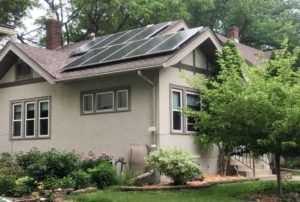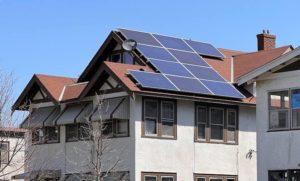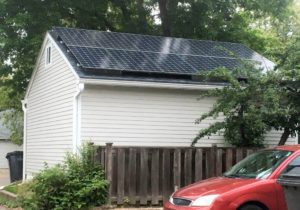Small Home Gazette, Summer 2022
Solar-Powered Bungalow
We’d build a little bungalow,
If you and I were one,
And carefully we’d plan it, so
We’d get the morning sun.
—Dorothy Parker, Day-Dreams
Electricity became common in urban homes in the 1930s. Now we are seeing rapid growth in residential solar energy. Is solar-produced electricity right for your bungalow?
Solar Potential
How much energy a solar installation (aka solar system or solar array) produces will determine its payback. A home’s potential energy production is determined by solar radiation, shading, roof slope, and available roof space.
Several calculators are available to get a quick assessment of your home’s solar potential. Depending on the calculator used, my bungalow rates from poor to great. See the Resources section at the end of this article for links to these calculators. The ratings for our house were:
- Poor – Minnesota Department of Commerce and University of Minnesota (solar maps)
- Good – City of Minneapolis (“Find My Solar Suitability”)
- Great – EnergySage (“Solar Calculator”)
The UMN tool intentionally provides a conservative estimate for determining suitability of photovoltaic* solar installations. Its “poor” rating of our home’s solar potential matched a solar installer’s assessment of our home several years ago. Between multiple mature trees blocking sunlight and a dormer interrupting the south-facing portion of our roof, our bungalow had low solar energy production potential. Instead of solar, my husband Pete and I opted to participate in Xcel Energy’s Windsource program to get energy from renewable resources.
Solar Panel Economics
A residential solar system in Minnesota is estimated to offset 60 to 70 percent of an average electricity bill. The average cost of installing solar panel systems in Minneapolis and St. Paul is $15,400. The payback period is estimated at nearly nine years. With consumer electricity prices rising—almost 30 percent on average over the last 10 years—payback could be faster. At the same time, solar rebates are decreasing, as incentives have been in place long enough to accelerate market adoption. Check with your local utility or solar installer about available rebate programs.
A 2019 Zillow study showed that solar homes nationwide sell for 4.1 percent more than comparable homes without solar panels. Buyers paid a 3.5 to 9.9 percent premium in the top 10 states. Data for Minnesota was not available.
At the end of their productive life, solar panels will need special disposal because they contain heavy metals such as selenium and cadmium. Minnesota is exploring development of a statewide collection and recycling program.
Structural Considerations
A south-facing, uninterrupted roof expanse will allow you to put more solar panels on your roof and make installation easier. Solar systems are expected to last 25 to 30 years. Installers suggest having at least 15 years of life remaining in your roof or have it replaced before adding solar panels. If your roof needs to be replaced after panels are in place, a solar installer will need to remove and reinstall the panels.
Aesthetics
Photovoltaic installations, the blue-black raised panels on roof tops or freestanding, account for nearly all the solar installations in Minnesota today. Some people find solar panels beautiful—a symbol of environmental ethos and technological advancement. Others, like the National Alliance of Preservation Commissions, want to retain the historic character of a property, while supporting the benefits of solar power. In its “Sample Guidelines for Solar Systems in Historic Districts,” the Alliance states, “Solar panels should be installed on rear slopes or other locations not easily visible from the public right-of-way. Panels should be installed flat and not alter the slope of the roof. Installation of panels must be reversible and not damage the historic integrity of the resource and district.”
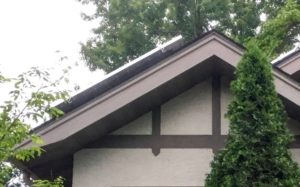 Solar shingles hold promise that visual appeal can be designed into solar systems. Litty Solar claims to be the only company currently installing solar shingles in Minnesota. Some literature suggests solar shingles have more technical challenges than panels. Companies like Tesla (tesla.com/solarroof) offer solar cell roof tiles that look and act like ordinary shingles, but their pricing fits in the luxury market.
Solar shingles hold promise that visual appeal can be designed into solar systems. Litty Solar claims to be the only company currently installing solar shingles in Minnesota. Some literature suggests solar shingles have more technical challenges than panels. Companies like Tesla (tesla.com/solarroof) offer solar cell roof tiles that look and act like ordinary shingles, but their pricing fits in the luxury market.
Go Solar Without Panels
If solar panels are not suitable for your home, you can support solar power by subscribing to a community solar garden. In 2014, Minnesota passed legislation requiring Xcel Energy to develop a community solar program for its customers. Other Minnesota utilities are developing solar programs as well. For Xcel’s program, third-party developers build and manage large-scale solar farms. They recruit commercial and residential subscribers who pay them a monthly fee to generate power. Xcel Energy purchases the power and adds the electricity to its grid. Xcel, in turn, gives the subscribers a production credit on their monthly electricity bill, based on the amount of electricity generated by the solar garden.

Power companies purchase energy from community solar gardens. The power company then gives solar garden subscribers a credit on their power bill.
Consumers must find their own solar garden operator who is currently taking subscriptions in their area. Comparing subscription options is a challenge. Contract terms and conditions vary and are presented in ways that make comparison shopping difficult. Long-term subscription contracts are the rule.
Pete and I recently subscribed to U.S. Solar (us-solar.com/state/minnesota). The solar credit we get every month is guaranteed to be larger than our subscription payment. First year savings are estimated at 8 percent. We are locked into a 25-year contract that is transferable to our next home in the service area or to the next homeowner. If they choose not to assume the contract, we pay $100 to opt out. Also, every five years, we can end our contract for a $250 fee.
Our decision to subscribe to community solar was not for our own financial benefit. Ultimately, we want to support renewable energy for the sake of the environment and to build the nation’s energy independence.
* Photovoltaic (or PV) cells convert sunlight into electrical energy. Solar cells, the standard type of photovoltaic cells, operate without chemicals and with no moving parts.
Resources
Tools to determine your home’s suitability for roof-mounted solar panels:
- MN Solar App, MN Dept. of Commerce and UMN
solar.maps.umn.edu/app
Solar maps to assess a home’s solar power potential.
- “Find My Solar Suitability,” City of Minneapolis
tinyurl.com/2bmkh55f
- “Solar Calculator,” EnergySage
energysage.com/solar/calculator
Xcel Energy solar programs:
- “Solar*Rewards®”
mn.my.xcelenergy.com/s/renewable/solar-rewards
Install your own panels.
- “Solar*Rewards®” Community”
mn.my.xcelenergy.com/s/renewable/solar-rewards-community
Subscribe to a nearby, third-party community solar garden.
Clean Energy Resource Teams program:
- “Community Solar Gardens”
cleanenergyresourceteams.org/solargardens#subscriptions
Background on community solar gardens. FAQ has a list of solar garden installers and community solar developers.
Interested in community solar? Contact Deb to learn more about her experience at mail@bungalowclub.net.
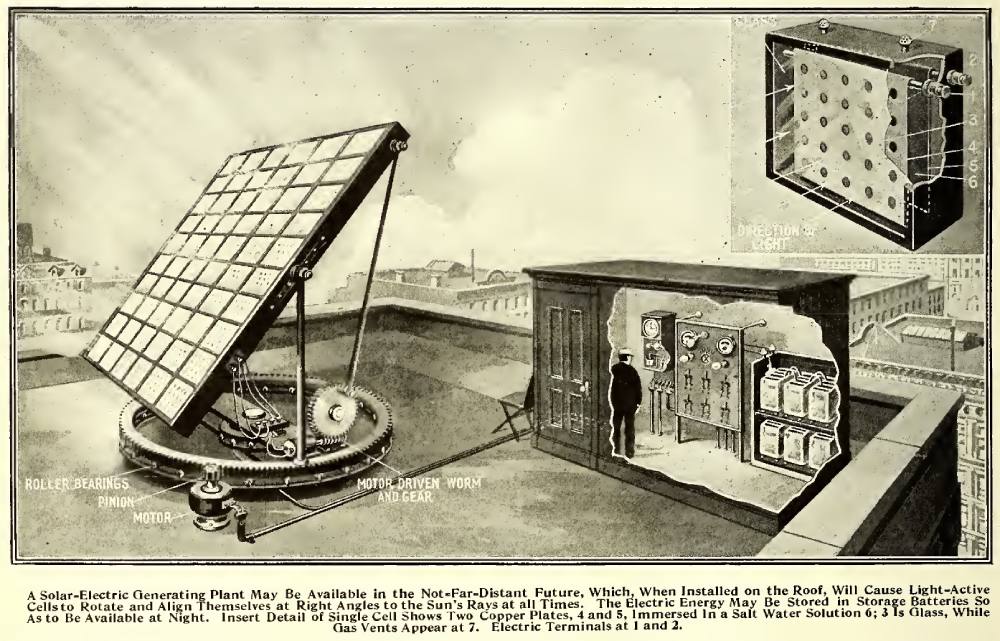
Solar technology begin in 1839 during the Industrial Revolution, when French physicist Alexandre Edmond Becquerellar first demonstrated the photovoltaic effect—the ability of a solar cell to convert sunlight into electricity. This illustration from the September 1916 issue of The Electric Experimenter shows a solar power setup that differs little from what is available today.









